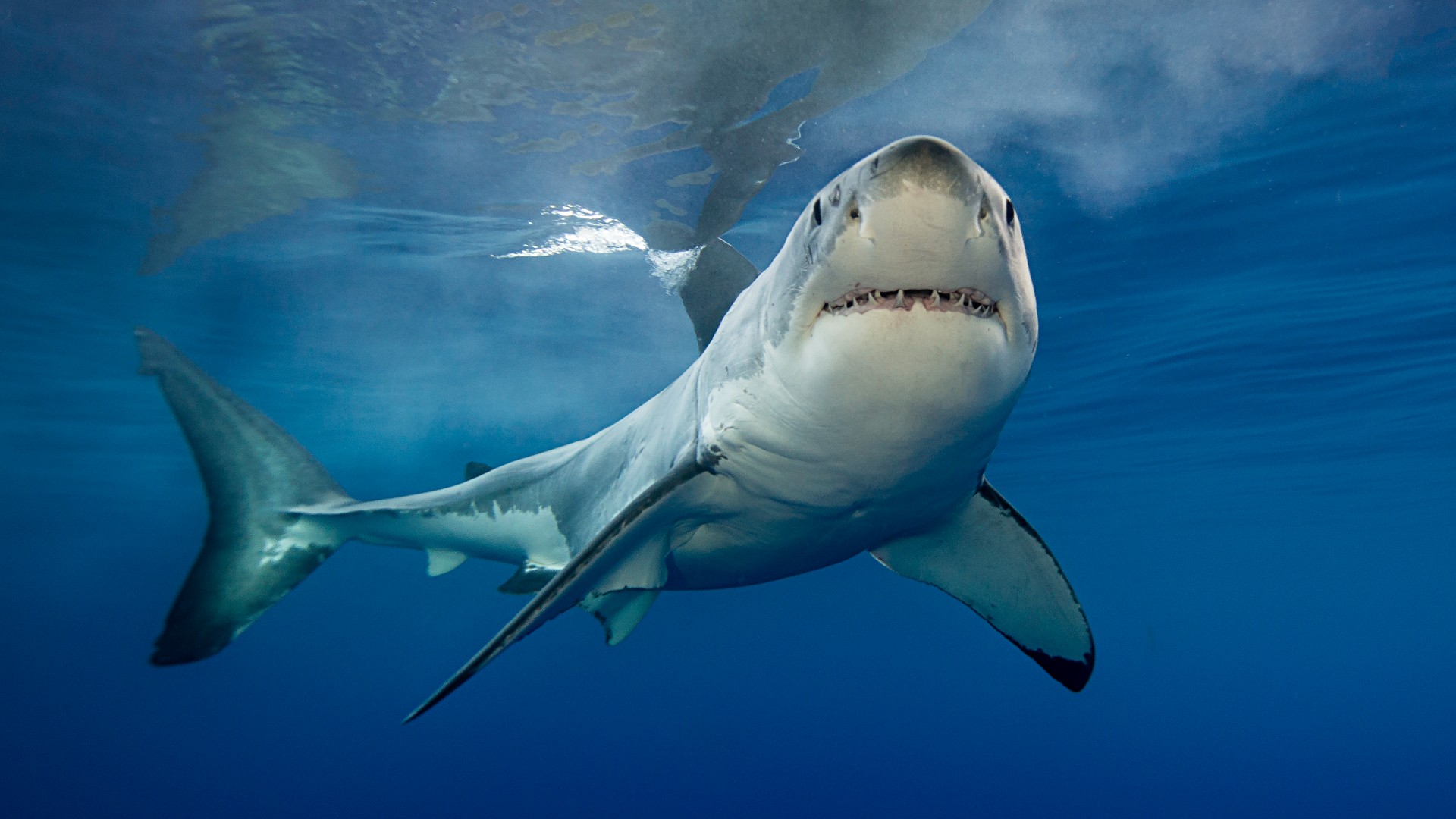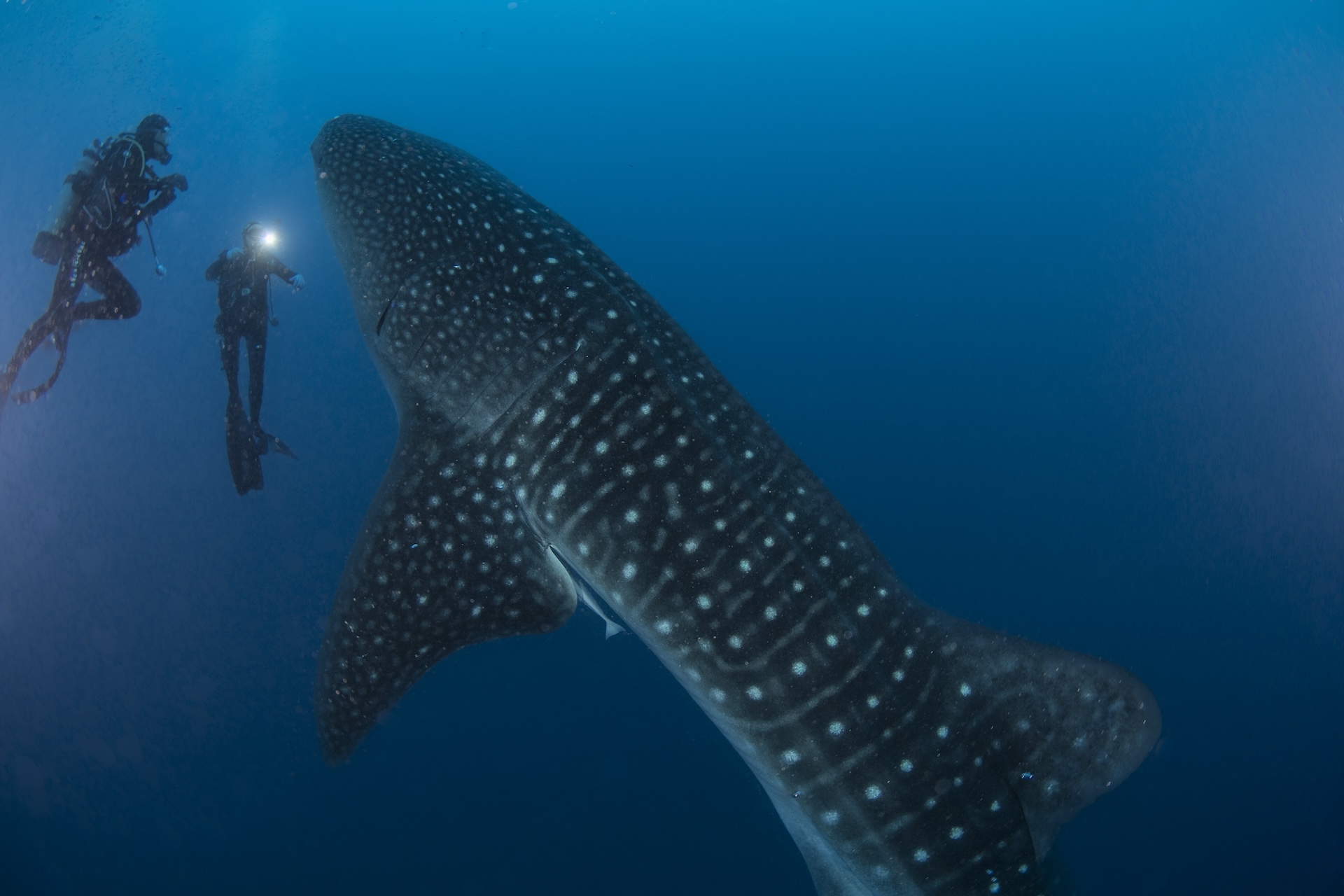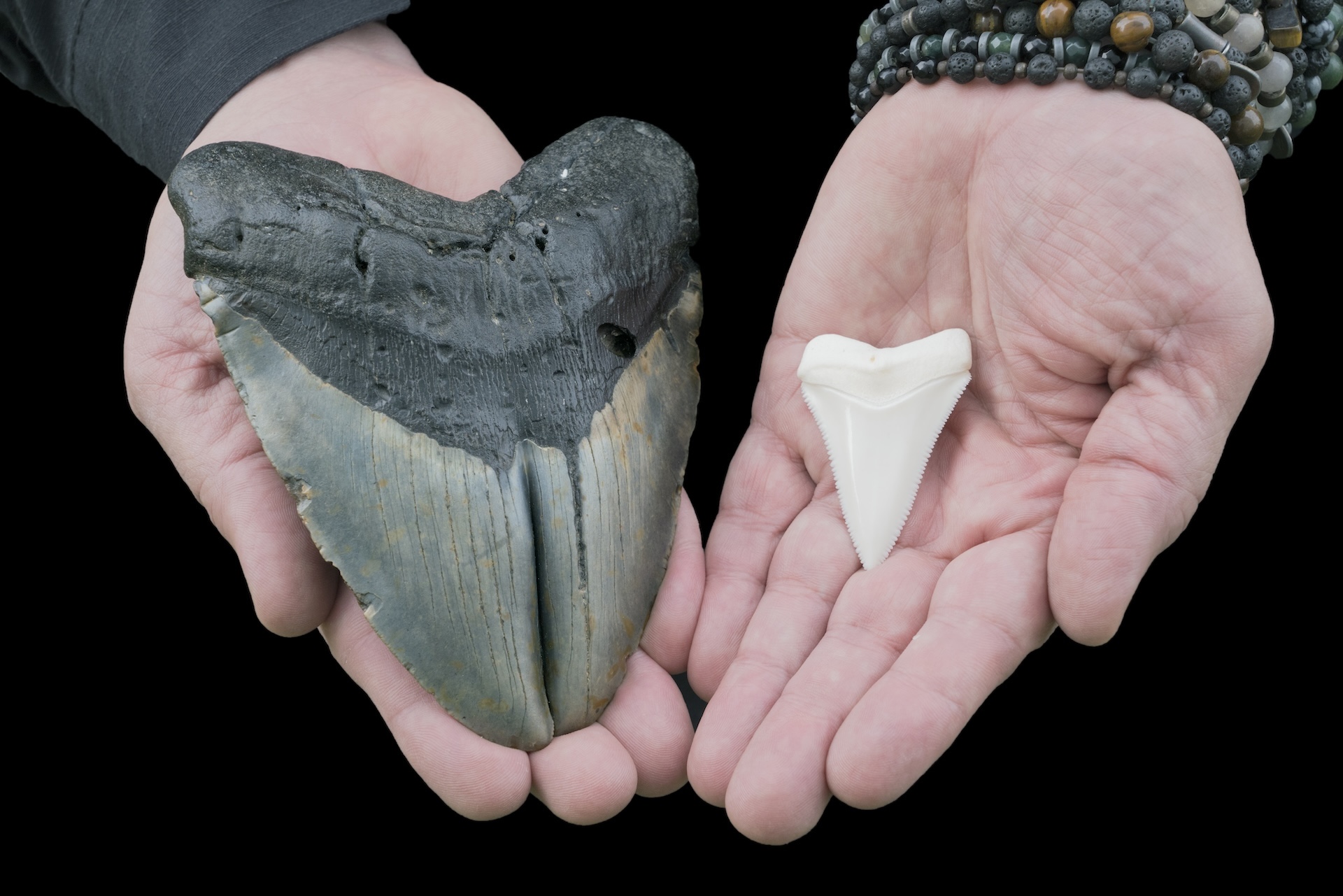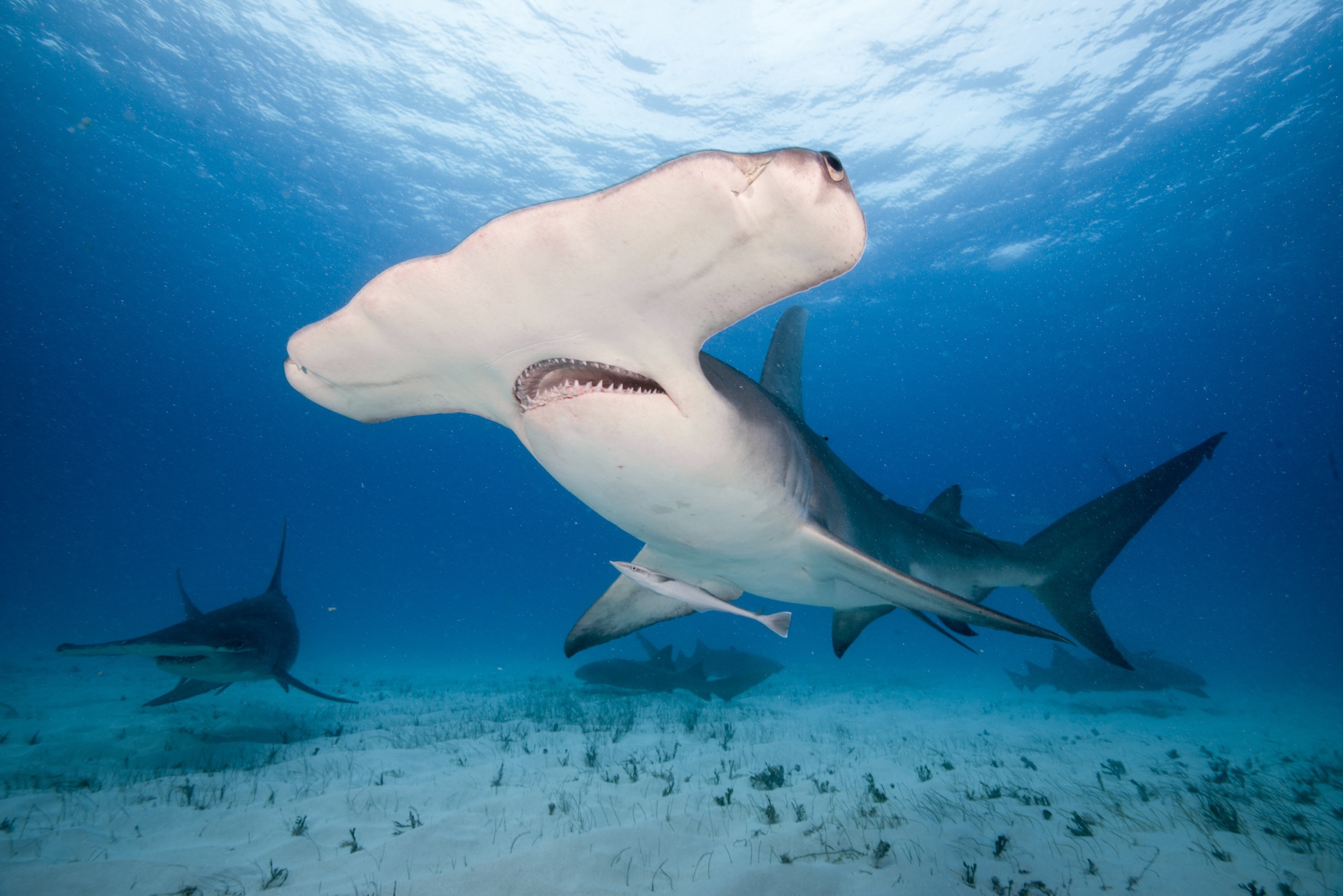Sharks: Facts about some of the ocean's top predators
Discover interesting facts about where sharks live, how big they can get, and how likely it is to get bitten by one.

Where they live: In every ocean around the globe.
How long they've been around: 450 million years.
How big they are: Smaller than a human hand to the size of a school bus.
Long portrayed in pop culture as scary beasts, real sharks are no Hollywood monsters. Sharks are a diverse group of mostly predatory fish. They do not have bones; their skeletons are made of a tissue called cartilage. Sharks traveled the seas long before the dinosaurs roamed Earth, and they play vital roles in the ecosystem. These marine creatures face far more dangers from humans than surfers or swimmers do from them.
5 fast facts about sharks
- The largest known great white shark was 20 feet (6 meters) long.
- Sharks sleep, but they may keep their eyes open while they do it.
- Sharks can learn to solve puzzles by watching other sharks.
- Different shark species swallow their food whole, tear it apart with razor-sharp teeth, or grind it down with flat chompers.
- You're more likely to be killed by lightning than by a shark.
Everything you need to know about sharks
Where do sharks live?
Sharks are found in every ocean on Earth, in habitats ranging from within coral reefs to under Arctic ice. Species like the glowing kitefin shark even live in the ocean's deep "twilight zone," where light barely penetrates.
Some sharks migrate vast distances for food and mates. Seasonal temperature changes and the need to find a place to give birth also motivate these movements. Using GPS tracking, scientists found that great white sharks can journey as far as 2,500 miles (4,000 kilometers) from the California coast to find feeding grounds. That's about the distance from Los Angeles to New York City.
Many sharks also migrate up and down within the water, to look for better food and more comfortable temperatures. These vertical journeys usually range from 30 to 300 feet (9 to 90 m). However, blue sharks can make daily drops as far as 1,900 feet (600 m) from the surface, likely to hunt deep-sea prey.
Biologists have found sharks in some unexpected spots. Two shark species live at Kavachi, an undersea volcano in the South Pacific, earning it the nickname "Sharkano." Hammerheads and silky sharks live in the hot, acidic waters of the volcano, which erupted in 2022. Many sharks also make their homes in the waters near big cities. Scientists found that bull, nurse and hammerhead sharks split time between Miami's noisy, polluted coast and more natural environments.
What do sharks eat?
Although most sharks are carnivores, they eat more than meat. Unexpected shark meals include seagrass, which can make up more than half of bonnethead sharks' diet. Scientists once fed these small hammerheads "little sushi rolls" of seagrass. The sharks could digest the vegetables about as well as sea turtles could.
Sharks eat everything from tiny plankton to much larger prey, including crabs and other crustaceans; fish; and hefty marine mammals, like seals. Researchers even found the beaks of two giant squid in the belly of a blue shark. A shark's diet can also change over its lifespan. Whereas young great whites survive on smaller squid and sting rays, adult great whites eat seals, sea lions, dolphins and dead whales.
Different sharks use different strategies to eat. Like many actual whales, the whale shark filter-feeds, straining teeny plankton from up to 400,000 gallons (1.5 million liters) of filtered water every hour. Sawsharks use their snouts to scrape up critters from the seafloor, while cookiecutter sharks take circular bites out of whales and other large creatures. Bottom-feeding sharks, like carpet sharks and nurse sharks, use their powerful lips and mouths to suck prey out of hiding places. Even the fearsome great white may do this.
How many shark species are there?
There are roughly 500 shark species today, and they range widely in size, shape and color. You could fit the smallest living shark, the dwarf lantern shark, in your pocket, yet the "gentle giant" whale shark can be longer than a full-size school bus.
The great white sharks — the world's largest predatory fish — are famous from the 1975 movie "Jaws." Female great whites grow to an average length of 15 to 16 feet (4.6 to 4.9 m), while males reach 11 to 13 feet (3.4 to 4 m). The bite of a great white is three times more powerful than that of a large African lion.
But prehistoric sharks make even great whites look puny. One of Earth's biggest apex predators, the gigantic megalodon, was an ancestor of modern-day sharks. Megalodon lived 23 million to 4 million years ago and grew up to 65 feet (20 m) long. A fake documentary once suggested the enormous fish survived until today, but rest assured: Scientists are confident there are no "megs" alive now.
Sharks also come in many different shapes, from the speedy torpedo design of great whites to the long, tooth-lined snouts of sawsharks. The odd-looking goblin shark even has a flabby body and shovel-like snout set above a retractable mouth. Shark skin paints a rainbow, too. One deep-sea goblin shark found by a team from the Australian Museum in 2015 was bright pink, for instance.
Scientists are still uncovering new shark species. In fact, the glow-in-the-dark kitefin shark — the largest glowing vertebrate — was just discovered in 2021.
How do sharks reproduce?
Sharks grow and mature slowly. They also put their effort into raising just a few babies rather than pushing out hundreds of eggs that likely won't survive.
Instead of penises, male sharks use two claspers to get sperm into females. And about 15 shark species can have young without males, with females self-fertilizing eggs. This is known as parthenogenesis, or "virgin birth."
Are sharks endangered?
Human activity has placed sharks in grave danger. Because of overfishing, one-third of sharks and related creatures are at risk of extinction, and fishing kills an estimated 80 million sharks per year. Many sharks die when boats looking for other types of fish accidentally catch sharks in their nets.
People also hunt sharks for meat, oil and cartilage — but most hunters are looking for their fins. Shark fin soup, considered a delicacy in some countries, can cost up to $100 per bowl.
Because sharks spend a lot of time raising a few young, each death hits shark populations harder than it does for other fish.
And these declining shark populations are bad for ecosystems, as these apex predators keep food webs in balance. Sharks help to keep fish populations healthy by weeding out sick and weak animals.They also may help keep healthy oxygen levels in the ocean by hunting fish that eat oxygen-producing plankton.
If shark populations dwindle, the ripple effects could come back to bite us. Billions of humans rely on these ecosystems for their food and income.
Some governments and international groups have taken steps to protect sharks. In 2009, the International Union for Conservation of Nature called on world governments to pass rules to ensure the fishing industry better protects sharks. Shark finning — where a shark's fin is cut off and the rest of the body is thrown back in — is banned in the U.S. In several states, it's illegal to sell, or even have, shark fins.The Chinese government stopped serving shark fin soup at state banquets in 2014.
Unfortunately, humans' fear of sharks stands in the way of conservation. But oftentimes, that fear is irrational and blown out of proportion. In his book about shark conservation, marine biologist David Shiffman points out that cars, lawnmowers and toasters all kill more people every year than sharks do.
Shark pictures

A whale shark next to two divers. Whale sharks are the largest shark species and the largest fish.

A great white shark breaches to catch its prey. Great white sharks are the largest predatory fish.

The tooth of a megalodon next to the tooth of a modern-day great white shark.

Hammerhead sharks are an example of the different body shapes and sizes found in sharks.
Further reading
Watch director Eli Roth's "Fin" documentary on Discovery+. See the low risk of shark attacks put in terms of other rare risks, like getting struck by lightning, from the Florida Museum. Follow great white shark activity online with the Atlantic White Shark Conservancy Sharktivity app. Learn how shark teeth were mistaken for dragon tongues in the Middle Ages, along with other odd shark facts, from Smithsonian Magazine.
Discover more about sharks
—Sharks are older than the dinosaurs. What's the secret to their success?
—Angular roughshark: The pig-faced shark that grunts when captured
—Stupendous sharks: The largest, smallest and strangest sharks in the world
Shark quiz
Get the world’s most fascinating discoveries delivered straight to your inbox.

Michael Dhar is a science editor and writer based in Chicago. He has an MS in bioinformatics from NYU Tandon School of Engineering, an MA in English literature from Columbia University and a BA in English from the University of Iowa. He has written about health and science for Live Science, Scientific American, Space.com, The Fix, Earth.com and others and has edited for the American Medical Association and other organizations.
- Marilyn PerkinsContent Manager


